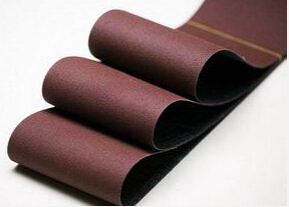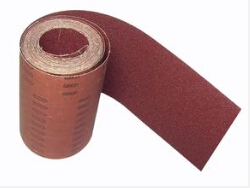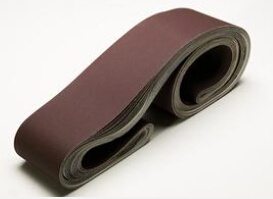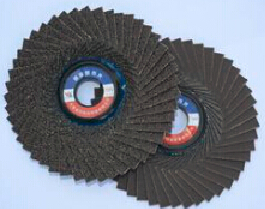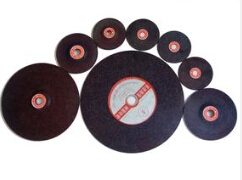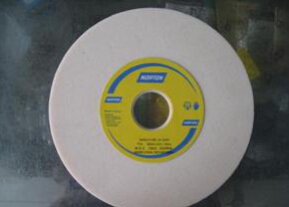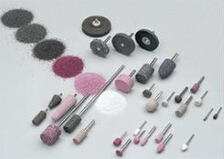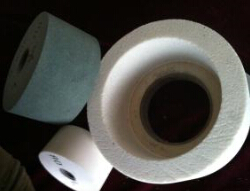Selection of Size for Abrasives
Zhongsen Editor 2020-04-23Abrasives media is sieved into sizes of different particle distribution, like FEPA F16, F24, F60 etc. The selection of size for different mainly involves the requirements of grinding efficiency and workpiece surface roughness. Generally, it can be selected according to the following factors.
1. When the machining precision of workpiece is high and the surface roughness is low, the abrasive tool with fine grain size should be selected. The smaller the abrasives are, the more abrasives are involved in cutting at the same time, the smaller the residual abrasive cutting traces on the workpiece surface, and the lower the surface roughness value. However, the choice of abrasive size must also be considered in combination with the grinding conditions used. If the amount of grinding is small and the dressing of grinding wheel is fine, the surface roughness of workpiece can also be lower if the abrasive particle size is coarse.
2. When the contact area between the abrasive tool and the workpiece surface is large, or the grinding depth is large, coarse-grained abrasive should be selected. The abrasive with coarse particle size has less friction with the workpiece surface and less heat. Therefore, when the grinding wheel is used for flat grinding, the selected abrasive particle size can be coarser than when the grinding wheel is used for flat grinding. Usually. The surface roughness Ra of the workpiece can reach 0.8 ~ 0.4 μ m when the grinding wheel with #36 ~ 46 grain size is used for flat grinding. If the grinding wheel speed vs is increased and the grinding depth AP is reduced, the surface roughness Ra of the workpiece can reach 0.4 μ m ~ 0.2 μ M. during the fine grinding, the abrasive of #150 ~ 240 grain size is used for grinding, and the surface roughness Ra of the workpiece can reach or lower. In the process of mirror grinding, the graphite grinding wheel with resin bond of fine powder W10 ~ W7 is selected.
3. In rough grinding, the machining allowance and grinding depth are large, and the abrasive particle size should be coarser than that in fine grinding, so as to improve the production efficiency.
4. In the cutting and trenching process, the abrasive with coarse grain, loose structure and high hardness shall be used.
5. When grinding ductile metal and soft metal, such as brass, copper, soft bronze, etc., the surface of the abrasive tool is easy to be blocked by chips, so the abrasive with coarse grain size should be selected.
6. For grinding materials with high hardness, such as quenched steel and alloy steel, coarse-grained abrasive should be selected. When grinding cemented carbide, because of the poor thermal conductivity of the material, it is easy to produce burns and cracks, so it is better to choose abrasive with coarse grain size. For the grinding of thin-walled and thin-walled workpieces, coarse-grained Abrasives should be selected because of their easy heating and deformation.
7. For workpieces with small cutting allowance or small contact surface between grinding tool and workpieces, abrasive with finer particle size can be selected. Compared with the abrasive for dry grinding, the abrasive grain size of wet grinding can be finer.
8. When machining on a grinding machine with good rigidity, abrasive with coarser particle size can be selected.
9. In form grinding, it is hoped that the shape of the working surface of the grinding wheel can be maintained well, so it is better to choose the finer grain size of the abrasive.
10. In high-speed grinding, in order to improve the grinding efficiency, the particle size of the abrasive is 1 ~ 2 smaller than that of the ordinary grinding. Because the fine particles are sharp, it is easy to cut into the workpiece. At the same time, there are more working abrasive grains on the unit working area of grinding wheel, and the force on each abrasive grain is smaller, so it is not easy to blunt. In addition, even if individual grains fall off, the influence on the grinding wheel wear is not as big as that of coarse grains, so it is helpful to keep the grinding process stable. However, the grain size of grinding wheel in high-speed grinding should not be too fine, otherwise, the condition of chip removal will become bad, which is not conducive to improving the grinding efficiency.
Generally speaking, medium-sized abrasive is the most commonly used. Fine grained abrasives are usually used only for fine grinding, grinding and polishing. In batch production, on the premise of meeting the requirements of workpiece roughness, coarse abrasive should be selected as much as possible to improve production efficiency. In small batch or single production, the processing quality of workpieces is generally considered, so it is better to select some fine-grained abrasives. See below table for the application range of abrasive with different particle sizes.
F8-F14: Used for grinding copper ingot, leather, salt, floor and sand blasting
F14-F30:Used for grinding copper ingot, casting burring, cutting copper billet steel pipe, rough grinding plane, grinding marble and refractory
F30-F60: It is generally used for rough grinding of quenched or un quenched steel parts, brass and other metals and hardmetals on grinding machines such as flat grinding, cylindrical grinding, centerless grinding and tool grinding
F60-F100: Used for precision grinding, tool edge grinding, gear grinding, etc
F100-F240: Used for sharpening, rough grinding, fine grinding, honing and thread grinding of various tools
F150-F220: For fine grinding, honing, thread grinding, instrument parts and gear grinding

